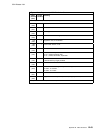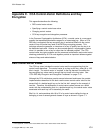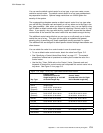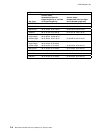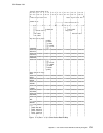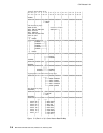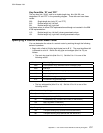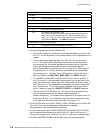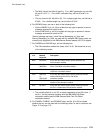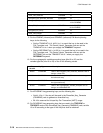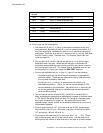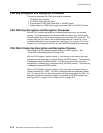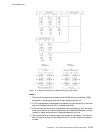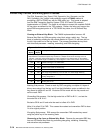
CCA Release 2.54
Key-Form Bits, ‘fff’ and ‘FFF’
The key-form bits, 40-42...and for a double-length key, bits 104-106...are
designated ‘fff’ and ‘FFF’ in the preceding diagram. These bits can have these
values:
000 Single-length key (only ‘fff’, not ‘FFF’)
010 Double-length key, left half
001 Double-length key, right half
And these values in some CCA implementations although not created in the IBM
4758 implementation:
110 Double-length key, left half, halves guaranteed unique
101 Double-length key, right half, halves guaranteed unique
Specifying a Control-Vector-Base Value
You can determine the value of a control vector by working through the following
series of questions:
1. Begin with a field of 64 bits (eight bytes) set to B'0'. The most significant bit
is referred to as bit 0. Define the key type and subtype (bits 8 to 14), as
follows:
The main key type bits (bits 8 to 11). Set bits 8 to 11 to one of the
following values:
The key subtype bits (bits 12 to 14). Set bits 12 to 14 to one of the
following values:
Bits 8 to 11 Main Key Type
0000 Data operation keys, SECMSG secure messaging keys
0010 PIN keys
0011 Cryptographic variable-encrypting keys
0100 Key-encrypting keys
0101 KEYGENKY key-generating keys
0111 DKYGENKY key-generating keys
Bits 12 to 14 Key Subtype
Data Operation Keys
000 Compatibility key (DATA)
001 Confidentiality key (CIPHER, DECIPHER, or ENCIPHER)
010 MAC key (MAC or MACVER)
101 SECMSG secure messaging keys
Key-Encrypting Keys
000 Transport-sending keys (EXPORTER and OKEYXLAT)
001 Transport-receiving keys (IMPORTER and IKEYXLAT)
Appendix C. CCA Control-Vector Definitions and Key Encryption C-7



